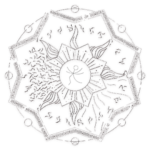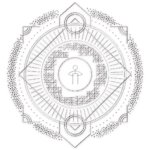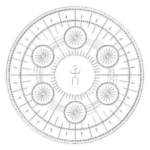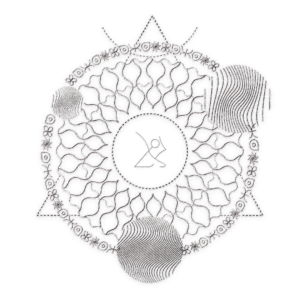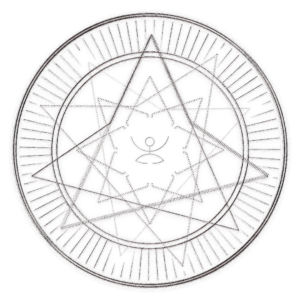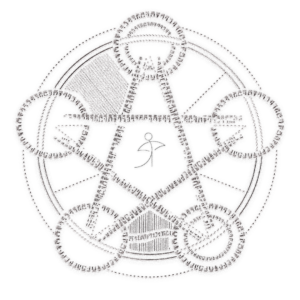The Enneagram
The Enneagram is a tool used by psychologists and psychiatrists worldwide to understand the drivers of human behavior.
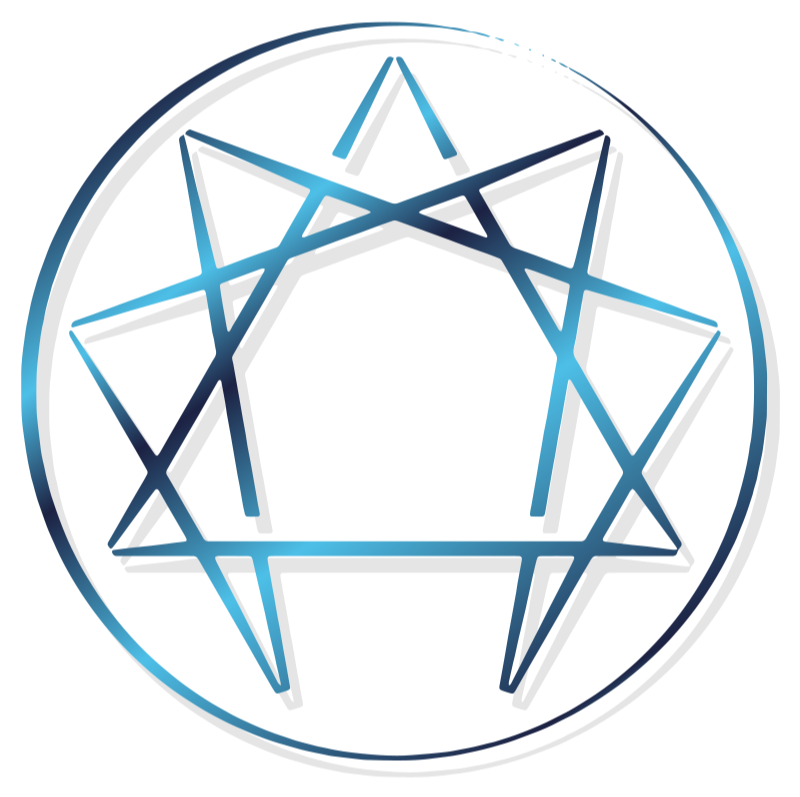
The origin of the Enneagram is not entirely clear, although many place it in ancient Persia. It is known to have been used by Sufi culture as a guide for personal and spiritual growth. Its name, nine (ennea) points (gram), refers to the nine personality types, and for centuries, it was passed down orally from generation to generation.
Gurdjieff was among the first to introduce the Enneagram to the West through his schools, and later, Oscar Ichazo, a Bolivian philosopher, made the first adaptation of the Enneagram from the East to modern psychology, with a humanistic and comprehensive view of the individual, including all personality types. A disciple of Ichazo, Chilean psychiatrist Claudio Naranjo, contributed significantly to its worldwide dissemination.
The classical view of the Enneagram divides people into 9 Enneatypes: 1 – Organizers, 2 – Helpers, 3 – Achievers, 4 – Individualists, 5 – Observers, 6 – Collaborators, 7 – Enthusiasts, 8 – Challengers, and 9 – Peacemakers. Each number corresponds to an Enneatype that describes the essence of each person’s behavior, and from there, one can work on personal growth.
There are authors who believe that the «essence» is formed in the early years of life, while others believe that each person is born with their essence. In any case, the world is divided into 9 with different variations, 3 different subtypes: sexual, social, or conservative, which brings the total to 27 possible personalities.
At Archetify we see it in a different way!
At Archetify, we see each Enneatype as clusters of behaviors that, based on their presence and weighting in each person, define individual personalities. We can differentiate over 500 different personalities and recognize more than 60,000 unique combinations, making each user 1 in 60,000.
Archetify ‘s Archetypes
The archetypes are roles where a certain pattern of behavior is repeated universally.

The brain unconsciously seeks behavioral traits and fills in the blanks based on the archetypal behaviors that underlie the collective unconscious. That’s why, for example, when we’re told that someone has a «Sergeant» personality, we can quickly understand what behaviors to expect.
Each person can have different archetypal behaviors consistent with their personality that emerge depending on the place and time. There are people who can be very similar in certain circumstances and very different in others. This is simply because they share some archetypes and not others.
From the Enneagram, we can understand these similarities and differences that might seem inconsistent from another perspective but are highly consistent with each personality.
Based on how present each of these energies is in a person, one can define the most common behaviors in it and the archetypes that characterize those behaviors.
We have identified 81 archetypes and call them The 81 Enneagram Archetypes.
The 81 Enneagram Archetypes
This approach aims to categorize individuals based on their three predominant energies, providing insight into the behaviors that characterize them at any given moment within various systems.
In essence, each person can exhibit different facets of their personality depending on the context and the roles they assume within different social systems. While all these facets remain true to who they are, they can be categorized and understood through the lens of the predominant energies that influence their behavior in each role.
Enneagram archetypes are constructed around a primary energy, which serves as the dominant force, and an accompanying energy, which influences and shapes the expression of that archetype’s essence.
Each individual possesses multiple archetypes that reflect various facets of their personality, contingent upon the prominence of Enneagram energies.
Considering the three primary energies within each person, a range of four to seven predominant archetypes may emerge, formed by the interplay of these energies. Following the sequence of energies from most to least predominant – 1, 2, 3, 4, 5, 6, 7, 8, 9 – the archetypes evoked within this framework would be the combinations: 12, 13, 23, 21, 31, 32, and 11 (the shadow archetype). The shadow archetype manifests under stress, often unbeknownst to the individual.
With this framework in mind, we’ve pioneered and patented an algorithm that assesses the affinity of each of the 81 archetypes with every possible combination of the nine energies, as well as the behavioral compatibility between two personalities.
The Archetypes of each energy
This energy develops the pursuit of doing what is right, often reflected in a strong sense of duty, honesty, and a meticulous approach to tasks. People with high organizational energy strive for precision and adherence to rules and forms. When this energy is altered, it can lead to excessive rigidity and the belief that there is only one correct way to do things. In such states, anger may emerge.
Archetypes:
12 – The ADVOCATE | 13 – The PIONEER | 14 – The DISSIDENT | 15 – The ENGINEER | 16 – The REFORMER | 17 – The CHARMER | 18 – The RULER | 19 – The IDEALIST | 11 – The COMMANDER
All these archetypes share a fundamental need to do what is right and seek justice according to what is appropriate. The accompanying energy determines the style through which this pursuit is expressed. When individuals primarily operate with energy 1, the Commander emerges with a focus on rules and structures. If energy 2 is present, the Advocate appears, driven by a need to bring justice to those in need. Energy 3 fosters the Pioneer, who seeks to discover and overcome new limits. Energy 4 introduces a dissident style, especially when duty conflicts with the need for unique self-expression. Energy 5 contributes the observational and logical approach of the Engineer. The mistrust inherent in energy 6 results in a Reformist style, where rules must be proven trustworthy before being applied. Energy 7 adds sympathy, creating a careful and charming demeanor, almost perfect. Energy 8 brings charisma and firmness, characteristics of natural rulers. Finally, energy 9 fosters serenity and inner well-being, leading to a more idealistic style focused on what should be done according to appropriate standards.
This energy enhances personalities with a focus on prioritizing human relationships. It is often reflected in the ability to perceive the needs of others, characterized by generosity, empathy, and solidarity. Individuals with high levels of this energy tend to find the right words and actions to help others feel better. However, when altered, it can lead to a near-constant need to please others, revealing a deep-seated need to feel needed. In such altered states, a sense of incumbency may emerge.
Archetypes:
21 – The PREACHER | 23 – The HOST | 24 – The MATCHMAKER | 25 – The COUNSELOR | 26 – The RESCUER | 27 – The GIVER | 28 – The PROTECTOR | 29 – The NURSE | 22 – The CAREGIVER
All these archetypes share a fundamental need to help others. The accompanying energy determines the style in which this help is expressed. When individuals primarily operate with energy 2, the Caregiver emerges, dedicated fully to others, often seeking affection through unconditional attention. If energy 1 is present, the Preacher appears, driven by a need to provide clear structures in their way of helping. When energy 3 accompanies, it reflects the style of the Host, striving to be the best in serving others. Energy 4 brings a unique approach, connecting with each person’s individuality to meet their specific needs. Energy 5 contributes the observational and rational reflections of the Counselor. The mistrust inherent in energy 6 results in the Rescuer style, feeling obligated to save others from all perceived dangers. Energy 7 introduces a pursuit of pleasure, orienting the service towards alleviating others’ discomfort. Energy 8 brings a strong, protective style, where individuals feel their best role is shielding others. Finally, energy 9 offers a more serene service style, adapting to each individual’s needs. Active listening, combined with perception, allows for assistance without judgment.
This energy instills in personalities a constant drive for success. It is often reflected in the ease with which individuals set and achieve goals efficiently. People with high achieving energy excel at problem-solving, overcoming obstacles, and taking action with tenacity. However, when this energy is altered, it can lead to a need to hide emotions to prevent them from interfering with objectives, generating an obsession with achievements, and confusion between being and doing in identity creation. Manipulation may surface in such altered states.
Archetypes:
31 – The ATHLETE | 32 – The SEDUCER | 34 – The SHAPESHIFTER | 35 – The DETECTIVE | 36 – The CAPTAIN | 37 – The CREATOR | 38 – The ENTREPRENEUR | 39 – The VISIONARY | 33 – The CHAMPION
All these archetypes share a fundamental need to feel successful and achieve their goals. As we’ve seen, the accompanying energy determines the style in which they pursue this success. When individuals primarily operate with energy 3, the Champion emerges, driven by a need for recognition and appreciation for their accomplishments. However, if energy 1 is present, the Athlete appears, needing clear structures to organize toward their goals. When energy 2 accompanies, it reflects the style of the Seducer, aiming to attract others and integrate them into their ideas. Energy 4 brings a unique style, like the Shapeshifter, who adapts to each moment to stand out among others. Energy 5 contributes the observational and rational reflections of the Detective. The search for security inherent in energy 6 creates the Captain style, feeling obligated to keep everyone safe on the journey. Energy 7 introduces a drive to innovate and discover different ways to achieve goals, reflected in the Creator. Energy 8 brings a strong, determined style where individuals fight passionately for their objectives. Finally, energy 9 offers a focused but calmer approach, allowing a broader perspective and greater acceptance, as seen in the Visionaries.
This energy endows personalities with a need to feel original, unique, and different from others. This often manifests in a keen sense of aesthetics and a desire to stand out to avoid vulgarity and mediocrity. People with high sensitive energy tend to constantly seek extraordinary experiences. When altered, this energy can create a constant need to express emotions and be the center of attention, revealing the strong influence of feelings on all actions. Dramatic tendencies may also appear in altered states.
Archetypes:
41 – The DESIGNER | 42 – The LOVER | 43 – The PERFORMER | 45 – The POET | 46 – The ROMANTIC | 47 – The ARTIST | 48 – The PASSIONATE | 49 – The DREAMER | 44 – The SINGULAR
All these archetypes share sensitivity and a need to express the emotions they experience internally. As we’ve seen, the accompanying energy determines the style in which they connect with this quest. When individuals primarily operate with energy 4, the Singular emerges, driven by a need to feel and be perceived as unique and special. However, if energy 1 is present, the Designer appears, needing to express themselves in an orderly and structured manner. When energy 2 accompanies, it reflects the style of the Lover, seeking deep connections with others and offering their full emotionality. Energy 3 enhances self-esteem to be the protagonists, as seen in the Performer. Energy 5 combines sensitivity with rational logic, as embodied by the Poet. The loyalty inherent in energy 6 creates the Romantic, resulting in more cautious and responsible expressiveness. Energy 7 introduces a drive to discover new ways of expressing feelings, reflected in the Artist. Energy 8 brings security and decisiveness, amplifying the intensity of the sensitive energy in the style of the Passionate. Finally, energy 9 offers tranquility, avoiding conflict, and expressing through the Dreamer, who finds well-being in their inner world.
This energy endows personalities with a need to understand and comprehend the world. This often manifests in an intellectual quest for logical answers to various questions. People with high observer energy tend to be reflective, constantly questioning the reasons behind everything and rationalizing every aspect of life. When altered, this energy can create a need to find rational and objective approaches for everything, leading to a certain disconnection from emotions. In altered states, there may also be a tendency to criticize anything that lacks a reasonable logic.
Archetypes:
51 – The SCIENTIST | 52 – The MENTOR | 53 – The MAGICIAN | 54 – The INVENTOR | 56 – The TRANSLATOR | 57 – The SEEKER | 58 – The SOVEREIGN | 59 – The MASTERMIND | 55 – The SAGE
All these archetypes share a need for knowledge and objective analysis in everything they engage with. As we’ve seen, the accompanying energy determines the style in which they connect with this quest. When individuals primarily operate with energy 5, the Sage emerges, driven by a need to accumulate knowledge, often remaining in the realm of theoretical information without applying it practically. However, if energy 1 is present, the Scientist appears, needing to impose method and order on their knowledge. When energy 2 accompanies, it reflects the style of the Mentor, seeking to use their wisdom to benefit others. Energy 3 introduces a desire to apply knowledge while maintaining mystery and depth, as seen in the Magician. Energy 4 brings the ability to express the inner world, embodied by the Inventor. The need for security inherent in energy 6 is reflected in the Translator, who applies knowledge to keep the group united and safe. Energy 7 fosters curiosity, driving the exploration of different perspectives, seen in the Seeker. Energy 8 provides backing for reflections, offering security and decisiveness, as exemplified by the Sovereign. Finally, energy 9 fosters a greater connection with the inner world, expressed by the Mastermind, who calmly analyzes different viewpoints.
This energy endows personalities with a constant quest for security. It often manifests in an ability to detect danger and remain vigilant about potential risks. People with high cautious energy tend to feel secure when working in a team and with the support of their community. When altered, this energy can lead to a perpetual state of alertness, an avoidance of unnecessary risks, constant questioning, and skepticism of the unknown. In states of alteration, insecurity and distrust may emerge.
Archetypes:
61 – The CITIZEN | 62 – The COMPANION | 63 – The NETWORKER | 64 – The NOVELIST | 65 – The THINKER | 67 – The PROMOTER | 68 – The PATRIARCH | 69 – The AMBASSADOR | 66 – The SUPERVISOR
All these archetypes share a need to feel secure within a community. When people primarily operate with energy 6, the Supervisor emerges, driven by a need to ensure everything is as expected and to mitigate all possible risks. However, if energy 1 is present, the Citizen appears, characterized by adherence to societal norms and correctness. When accompanied by energy 2, it reflects the style of the Companion, who seeks to support others and be a pillar within their group. Energy 3 brings a more practical and strategic perspective, as seen in the Networker. Energy 4 combines alertness to potential risks with the ability to express them, highlighted in the Novelist. The enthusiasm and positive disposition of energy 7 are embodied by the Promoter, who enjoys showcasing what happens within their trusted circle. Energy 8 provides a sense of protection and strength, as demonstrated by the Patriarch. Finally, energy 9 brings serenity and the ability to listen to others, reflected in the Ambassador’s pursuit of peace and unity.
This energy infuses personalities with a constant pursuit of enjoyment and fun. It often manifests as an ability to see the positive side of things, easily imagine and project creative ideas and plans. People with high enthusiastic energy are characterized by their love for freedom, change, and novelty. When altered, this energy can lead to a relentless search for pleasure and amusement, resulting in a lack of commitment, a somewhat childish attitude, and a perpetual need to maintain a sense of freedom. Inconsistency can appear in states of alteration.
Archetypes:
71 – The EVENT PLANNER | 72 – The CLOWN | 73 – The EXPLORER | 74 – The HEDONIST | 75 – The GENERALIST | 76 – The STORYTELLER | 78 – The INNOVATOR | 79 – The CHILD | 77 – The JESTER
All these archetypes share the need to feel that they are enjoying life. When people primarily operate with energy 7, the Jester emerges, driven by a constant need to laugh at everything and everyone, regardless of time and place. However, if energy 1 is present, the Event Planner appears, characterized by order and attention to detail to enjoy life in an organized manner, ensuring everything goes as planned. When accompanied by energy 2, it reflects the style of the Clown, who seeks to bring joy to others without paying much attention to their own needs. Energy 3 brings the Explorer with a more focused and goal-oriented approach. Energy 4 is reflected in the Hedonist’s pursuit of extraordinary pleasures. Energy 5 adds depth to this interest, reflecting the style of the Generalist, trying to know enough information to be able to talk about each topic. The combination of energy 6’s search for unity and the need to be at the center is embodied in the Storyteller. Energy 8 provides the ability to act decisively and carry out their creative ideas, as seen in the Innovator. Finally, energy 9 brings the naivety and occasional childish behavior of the Child.
This energy infuses personalities with a pursuit of justice and power. It often manifests as a strong capability for leadership and ease in decision-making. People with high fighter energy tend to identify with struggle and are not afraid to put themselves on the line to achieve their goals. When altered, this energy can lead to constant displays of strength and dominance, maintaining a combative attitude ready to face any challenge. Aggressiveness can appear in states of alteration.
Archetypes:
81 – The JUDGE | 82 – The LIBERATOR | 83 – The GAMBLER | 84 – The ADVENTURER | 85 – The HERO | 86 – The REBEL | 87 – The DOER | 89 – The ACTIVIST | 88 – The WARRIOR
All these archetypes share the need to feel they are fighting for worthy causes. When people primarily operate with energy 8, the Warrior emerges, viewing life as a constant battle for survival. However, if energy 1 is present, the Judge appears, driven by the quest to enforce justice according to established rules. When accompanied by energy 2, the behavior reflects the style of the Liberator, whose empathy drives them to fight for the needs of others. Energy 3 brings a daring approach seen in the Gambler, who takes risks without measuring the consequences. Energy 4 is reflected in the Adventurer’s quest to constantly experience extraordinary moments. Energy 5 complements with the capacity for reflection and objectivity embodied by the Hero. Energy 6 combines assertiveness and distrust in the style of the Rebel. Energy 7 introduces the restless mind of the Doer, who continuously faces new challenges. Finally, energy 9 brings an integrative perspective that, when combined with the capacity to fight, is represented by the Activist.
This energy infuses personalities with a quest for peace and well-being. It often manifests as a need for tranquility and the ability to understand and accept different viewpoints. People with high peacemaker energy tend to prioritize harmony, avoid conflicts, and exhibit great patience. When altered, this energy can lead to a constant desire to avoid conflict, resulting in indecisiveness and an over-adaptability to others’ beliefs. Constant inaction can also appear in states of alteration.
Archetypes:
91 – The SHEPHERD| 92 – The HEALER | 93 – The CRAFTSMAN | 94 – The MONK | 95 – The ALCHEMIST | 96 – The MEDIATOR | 97 – The INNOCENT | 98 – The YOGI | 99 – The ADAPTABLE
All these archetypes share the need to feel inner peace. When people primarily operate with energy 9, the Adaptable archetype emerges, characterized by a serene and flexible style that avoids conflicts at all costs. However, if energy 1 is present, the Shepherd appears, seeking well-being through structure and order. When accompanied by energy 2, behavior reflects the style of the Healer, guiding others to find their own paths to peace. Energy 3 brings a more focused and executive approach seen in the Craftsman. Energy 4 is reflected in the Monk’s inner connection and pursuit of well-being through emotional awareness. Energy 5 combines inner wisdom and inquiry embodied by the Alchemist. Energy 6 aims for communal peace, reflected in the Mediator’s style. Energy 7 introduces the ability to see the positive side of everything, as seen in the Innocent. Finally, energy 8 brings the strength and decisiveness of the Yogi.
This approach not only provides a more granular view of behavior and personality traits but also has the ability to recognize when there are real behavioral changes resulting from personal growth, the development of new habits, or attitudinal changes.


